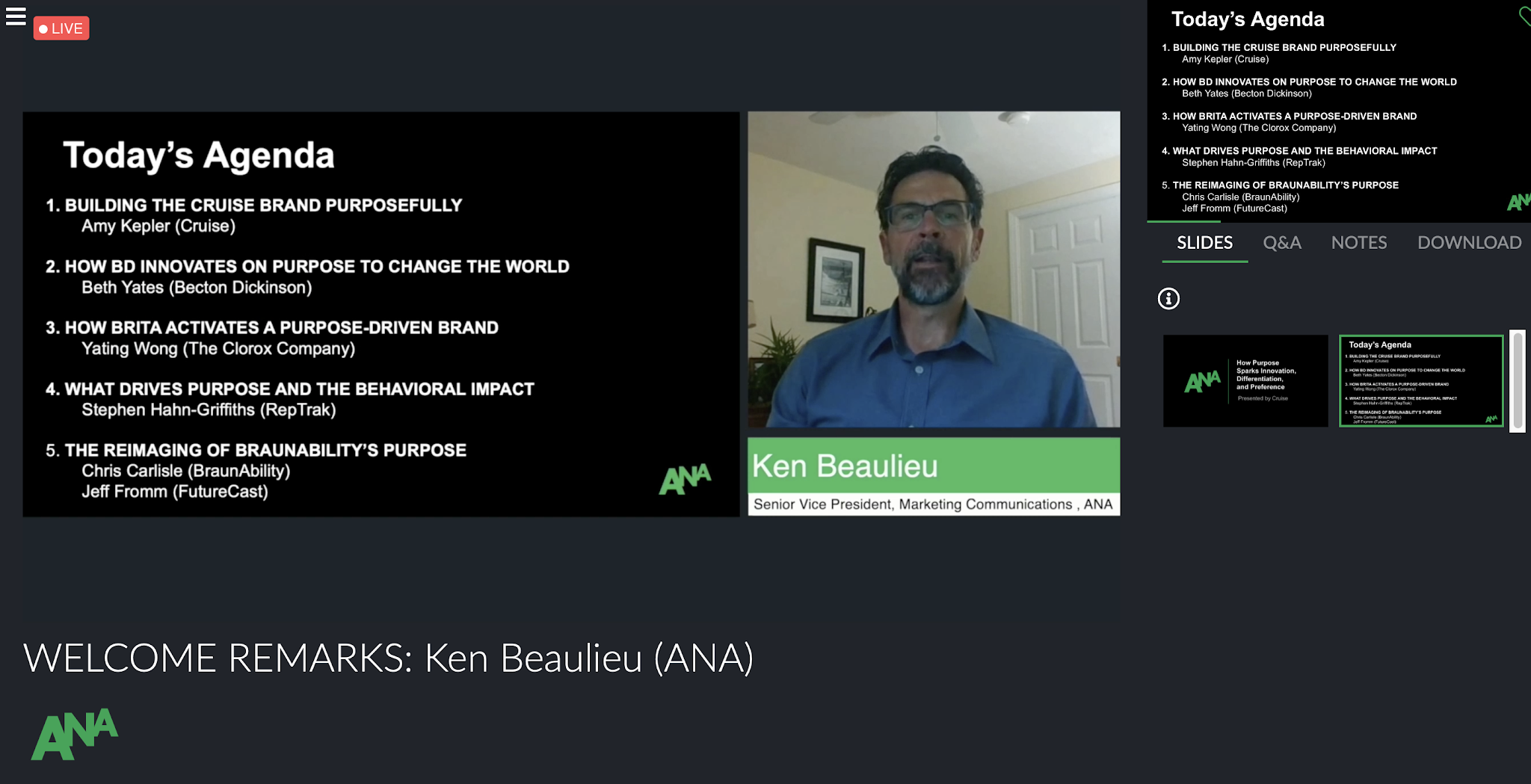The Future of Marketing
I attended the 2016 Ad Age Digital Conference where marketers and agencies were brought together to rethink their work, out loud. Questions discussed were what is advertising now—an ad or an experience? How does it get done—and by whom? Speakers brought thought-provoking topics and discussions to the conference attendees.
The event was curated by the publication's editorial team, with an agenda focused on the advertising landscape and the shift to an "ad-free" future. The relevancy of conference was built to address consumers' attention diffusing and exploring the ways in which brands can engage with consumers where they are and on the platforms they use most.
According to Cision, The Ad Age Digital Conference is the industry's marquee event that gathers brands, media, agencies and technology players to delve into the industry's most pressing issues, including: ad blocking, viewability, the accelerated technology adoption rate, immersive experiences, disruptive storytelling, the Internet of Things, and the future of advertising in a streaming-video world, among other highly charged topics of conversation.
The day was filled with powerful insight from speakers in the industry looking, thinking and working to develop better strategies to better reach their consumer. Brand Building in the Third Decade of Digital was presented by Marc Pritchard, Chief Brand Officer, Procter & Gamble, during this interview Marc discussed that after more than 20 years of history, digital technologies continue to accelerate changes in media, marketing and e-commerce. He went on to discuss the most creative and innovative ways P&G brands are creating value for today’s digital-centric consumers, while tackling challenges facing the industry. Marc stated that "although we have a long history of building brands, we must still stay relevant in order to capture the next wave of consumers".
I found it interesting that even a brand as large as P&G placed a primary focus to still continue to innovate and create content and messaging for their consumers, regardless of such a large marketshare.
Tania Yuki, Founder and CEO, Shareablee Creativity Meets Data discussed mainly how
data has the potential to enable creativity, yet most organizations still have not integrated this kind of thinking into how they ideate, create and measure success. The presenter referenced heavy on how based on new research revealing the social behaviors of various audience segments, we can learn which content is exciting to target segments, and how organizations can harness these insights to deliver more effective advertising. This was topic was of particularly of interest to me, some new ideas that were brought up included how to create campaigns for particular audiences using data software tools.
On a panel which included Ryan Horrigan, Chief Content Officer, Felix & Paul Studios
Dan LaCivita, CEO, Firstborn, Resh Sidhu, Creative Director, VR Studio, Framestore
and Moderator: Ann-Christine Diaz, Editor, Creativity they discussed Virtual Reality’s Next Phase: Moving From Experimentation to Strategy.
So as filmmakers, game developers, publishers, and marketers continue to fall in love with virtual reality, as the technological must for creating immersive content other issues arise. According to Adage, While the VR medium grows, quick experimentation will no longer suffice, and a proper strategy will be needed for success. This panel allowed us to hear from the companies that actual are making big investments in VR, and the creative projects they’re developing. During the conference I was able to learn which types of content are proving successful on VR and what can be done to further improve the experience for consumers.
John Collison, Co-Founder and President, Stripe, Chris Maliwat, Head of Product Management, Warby Parker; Michael Yamartino, Head of Commerce, Pinterest
and Moderator: Maureen Morrison, Reporter, Advertising Age came together to speak about Making Social Commerce Stick. Maureen introduced "with retailers eager to drive sales via social and mobile, and social networks seeking new ways to keep users engaged, commerce is poised to be the next evolution of social media. Yet, even with the increase of “buy buttons,” most platforms are seeing very little user adoption." The discussion around those within the social commerce arena discussed their efforts to make buying experiences on platforms like Twitter and Pinterest easier for users. What was interesting was how they created experiences to engage users based on preference they collected from data.
The last speaker I found interesting was Marc Mathieu, CMO, Samsung
and his presentation of the Marketer’s Playbook: Investing in Storytelling.
Marc explained "as consumers expect brands to move at their ever-increasing pace with marketing that captures their attention in inventive ways. “Why?” campaign, Samsung is here to answer the call of consumers by investing in disruptive storytelling." It was an interesting take on how Samsung is writing a new marketing playbook that is at the intersection of technology and humanity.
Overall, as marketers were just starting to talk in terms of “traditional” vs. “digital.” This digital advertising space is considered traditional in its own right and we’re moving into an “ad-free” future says adage. For marketers’, that means learning how to engage with consumers on their terms.
My major takeaways for the event was the how the evolution of traditional advertising to more interactive experiences will impact consumers, and how industry innovators are realigning to meet consumers where they are and where they're headed next. Also, how ad blocking, viewability and transparency issues are setting a path forward to improve marketers' relationships with consumers. Additionally,how new marketer's playbook from Samsung, and its investment in disruptive storytelling is at the intersection of technology and humanity and lastly how advertisers are adjusting strategy to adapt to the new streaming reality.
The conference was exciting and it was great to hear industry leaders discuss and hash out pressing industry issues like ad blocking, ad fraud, and kickbacks. No conversation was off the table and to hear the big brands in technology and media answer tough questions head on with the Ad Age editorial team made it all the more interesting to be on the cutting room floor of advertising discussion.



